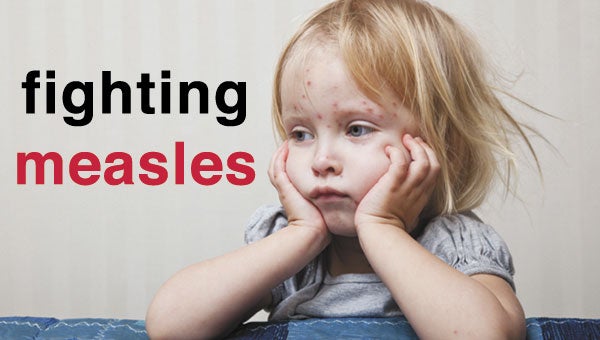Dr. E: Most parents choose vaccines here
Published 12:00 am Friday, February 6, 2015
Covington County enjoys one of the highest rates of vaccination in the state, with 97 percent of parents choosing vaccines.
A recent measles outbreak has driven many of the remaining 3 percent to the pediatrician’s office, Dr. Charles Eldridge said.
The Centers for Disease Control and Prevention (CDC) and state health departments are investigating a multi-state outbreak of measles associated with travel to Disneyland Resort Theme Parks in California, and the Alabama Department of Public Health is encouraging parents to make sure their children receive the MMR (measles, mumps, rubella) vaccine.
It is the MMR vaccine that parents bypass most, Dr. Eldridge said.
“This never happened before we became as autism sensitive as we are now,” Eldridge said.
Eldridge said most autism is diagnosed when children are 16 to 18 months old, which is about just after the recommended age for the first MMR vaccine, 15 months.
“There was an assumption that the vaccine might be contributable,” he said.
A British physician who studied the possible relationship believed there to be a cause and effect. But Eldridge said the study has been reproduced many, many times with different effects.
“People who worked with the doctor say he falsified his results,” Eldridge said. “Purely scientific studies show no connection between the vaccine and autism, he said.
“They have disproved the MMR correlation,” Eldridge said, adding that the good news is that vaccines have been made cleaner and safer as a result of those fears. The amount of antigens in vaccines has been reduced, and preservation methods are better, with mercury no longer being used as a preservative. As a result, fewer children have reactions to vaccines, he said.
The recommended doses of MMR vaccine are at 15 months and 4 years, Eldridge said. But for those who delayed the decision, or perhaps changed their minds, it’s never too late, he said.
The vaccine has so effectively eradicated measles, that Eldridge said he hasn’t seen a case since the mid-1970s, when he practiced in Texas.
“In 1974, there was an outbreak of about 10 cases there,” he said. “Most young physicians practicing now have never seen red measles.”
Measles is a highly contagious respiratory disease caused by a virus and so contagious that any unvaccinated child exposed to it will probably get the disease. Symptoms include fever, runny nose, cough and a rash all over the body. Those infected can transmit the virus for about five days before the typical rash appears. Symptoms occur within one to two weeks after exposure. Common complications of measles are ear infections and less often pneumonia. Rarer complications are inflammation of the brain and death.
More than 100 people in 15 states were diagnosed with measles in January, with 92 percent of the cases related to the outbreak that began before Christmas at Disneyland in California. To date, 142 cases have been reported in the United States this year.





